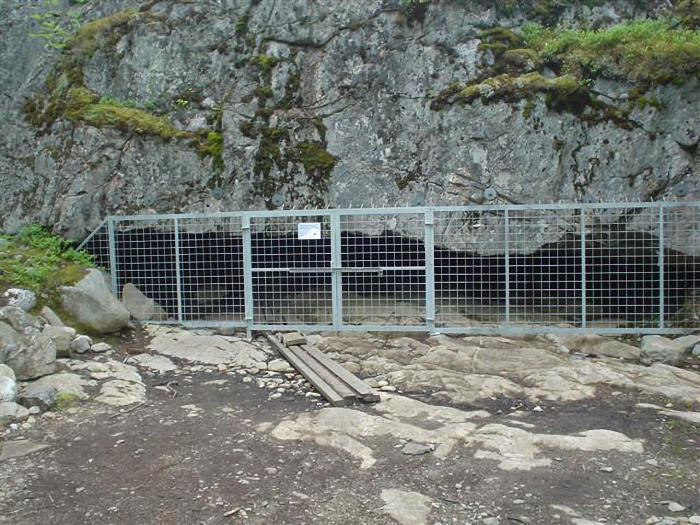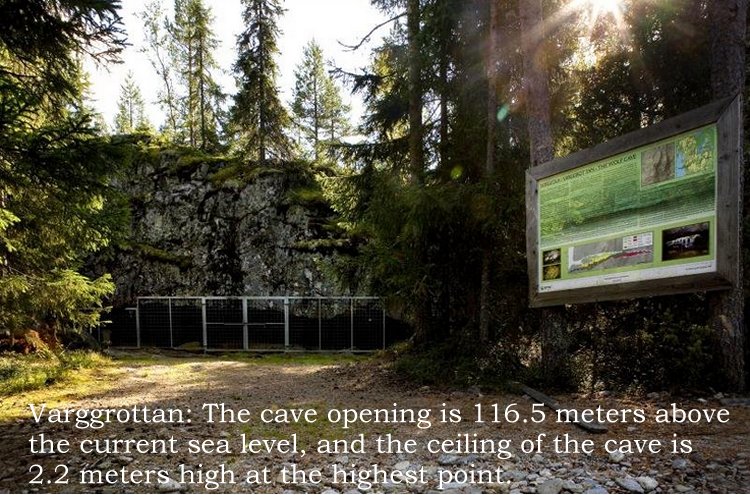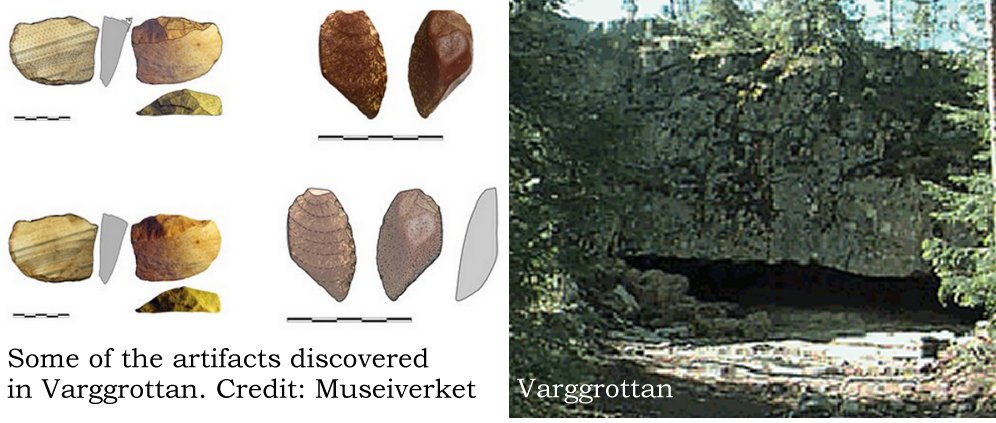Ellen Lloyd – AncientPages.com – In Finland, many unexplored ancient caves hold many secrets. One of them is called Varggrottan, which means Wolf Cave in English.
When archaeologists explored the mysterious cave, they found several artifacts that suggest this place was home to Neanderthals 130,000 years ago.

The entrance to the Wolf Cave – Varggrottand. Credit: Örkki – Public Domain
There is still a debate about these controversial artifacts unearthed in the cave. Still, if they did belong to the Neanderthals, then there is no doubt that Varggrottan holds a special place in history, making it one of the oldest discovered homes of ancient people in Scandinavia.

There Are Over 1,000 Unexplored Ancient Caves In Finland
There is no lack of caves in Finland. It is estimated that there are about 1,000 ancient caves, most unexplored. The Finnish caves are small by international standards, but it does not make them less interesting.
Throughout history, Finnish caves have been a hiding place for thieves and deserters hid. Monks sometimes inhabited caves, and it was also common for people held religious ceremonies or rituals in those underground worlds.
Ancient Finnish myths and legends tell how the caves were haunted by supernatural beings such as spirits and demons. The caves held a special place in Finnish folklore, yet we still know little about these enigmatic ancient places.
The Only Known Neanderthal Artifacts In The Nordic Countries Were Discovered In Varggrottan
Located in Pyhävuori mountain in Kristinestad, near the Karijoki municipality in Finland, the Varggrottan is a crack in the mountain packed with soil.
Based on discoveries made in the cave, many archaeologists think that the cave was inhabited about 75,000 to 130,000 years ago before modern man appeared in Europe. Over the years, as many as 200 artifacts, some 600 pieces of strike waste, scrapers, bolt stones, and heated stones from an open fire have been found here.

Those in favor of the theory argue that the artifacts worked in a way typical of the Middle Paleolithic, but not all scientists are convinced whether Neanderthals settled in the cave. If the artifacts are genuine, then the Wolf Cave – Varggrottan is Finland’s oldest and only so-called Paleolithic archaeological site.
The main question must be answered: Are the ancient objects man-made or a work of nature? There is a disagreement among scientists, and some argue that the artifacts do not resemble Neanderthal objects discovered in France. Another objection against the Neanderthal theory is that cave was located underwater during the period in question and that there is no proof that fire was made there.

Is Varggrottan the oldest human settlement in Scandinavia?
Hans-Peter Schulz of the National Board of Antiquities has defended the findings, saying that it is possible that the cave was situated above water level at the time and that soot from the fireplace that has been found is over 40,000 years old and cannot have come from outside the cave.
The justification that the pieces of stone found in the cave are products of human beings is, according to Schulz, that the objects have been exposed to a rapid and aimed blow, leaving a surface that does not look similar to one that has been exposed to exogenous processes but does resemble those of man-made objects from the Paleolithic found in central Europe.
Suppose Varggrottan is the oldest known human settlement in Scandinavia. In that case, we should also be able to find traces of Neanderthals in Sweden, Norway, and Denmark, but it will take several more years to come to the bottom of this ancient mystery.
More Research Is Needed
Archaeology and cave research are still in the early stages in Finland, but it doesn’t mean there is a lack of ancient treasures in this beautiful country in Scandinavia.
One day in the future, we hope scientists will be able to find more precious ancient artifacts and traces of ancient civilizations, and when they do, we will be able to add the records to our history books.
Written by Ellen Lloyd – AncientPages.com
Updated on January 20, 2024
Copyright © AncientPages.com All rights reserved. This material may not be published, broadcast, rewritten or redistributed in whole or part without the express written permission of AncientPages.com
Expand for references
Museiverket
Museer i Österbotten





